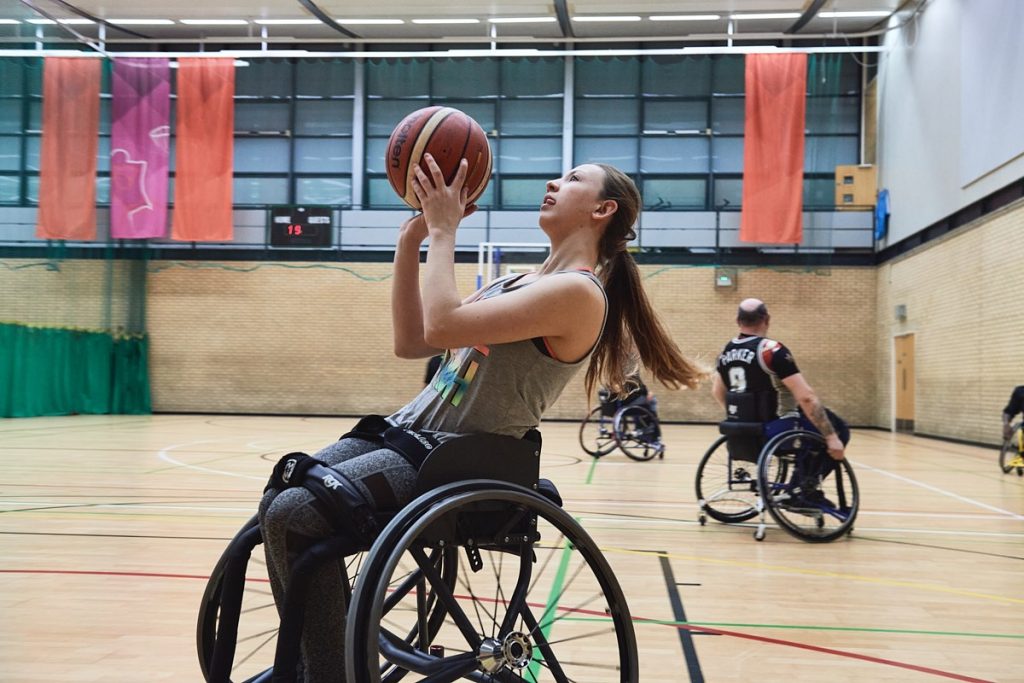The Activity Alliance Social Value Report uncovers the significant economic and social potential of increasing participation in sport and physical activity by disabled people.
Using the governments WELLBY (Wellbeing Adjusted Life Year) framework, the report highlights how prioritising inclusion in sport and physical activity can address health inequalities, improve wellbeing and deliver significant social and economic benefits.
Social and economic benefits
The report shows that enabling disabled people to meet the Chief Medical Officer’s activity recommendation of 150 minutes of activity per week, generates £6,200 in social value per person annually. This return is up to four times greater than the value for non-disabled individuals. The report also finds that even light physical activity, generates a substantial benefit of £4,400 per person annually, highlight the crucial role of activity in improving wellbeing.
Disparity in participation
Disabled adults are twice as likely as non-disabled people to be inactive (41% vs. 21%). This disparity represents a lost potential of £10.9 billion annually in social value. Closing this activity gap could create £35.9 billion in additional value, with immense positive implications for health and social outcomes.
Barriers
There are significant challenges that continue to impact participation. These include facilities which may not be accessible, service and activity offers which do not meet needs or are not adapted, as well as perceptions and stereotypes in relation to ability.
The report highlights that 43% of disabled people feel they have the opportunity to be as active as they want, compared to 69% of non-disabled individuals, illustrating the need for more inclusive environments and services.
Reducing pressure on health services
Physical activity has a vital role in improving health and wellbeing and subsequently in reducing demands on health care services. Physical activity is important not only to helping prevent many health conditions, it is also crucial in helping people to manage existing conditions, helping to improve quality of life. Increasing activity levels among disabled individuals can help to mitigate the incidence of chronic illnesses, mental health challenges and other conditions, improving lives and creating both immediate and long-term savings for the health service.
Empowering the workforce to drive change
A skilled and inclusive workforce in sport and physical activity is essential to achieving greater participation. By creating inclusive practices, equipping professionals with skills to create and adapt inclusive activity and promoting awareness of the needs and ability of disabled people, the sport and physical activity workforce becomes a true agent for change.
The sector’s professional standards for working inclusively, working with people with long-term health conditions and working with inactive people, provide professionals, employers and learning providers with a clear framework which can be used to develop specific skills and knowledge to enable participations across people with a range of needs.
This investment is instrumental in creating welcoming services that enable disabled individuals to thrive, participate fully and enjoy the many benefits of physical activity.
Action
The report calls for a collaborative approach to addressing barriers and improving inclusion. It urges policymakers and all stakeholders to:
- Create environments and programmes that address the needs of disabled individuals
- Elevate disabled voices in policy and decision-making processes
- Collaborate across sectors to tackle systemic inequalities and drive meaningful change
Welcoming the report, Tara Dillon CEO of CIMSPA said,
“The findings of this report present an incredibly compelling case for prioritising inclusive physical activity as a lever for improving social and economic value. As a sector and society we need to work harder to remove barriers and create more opportunities for disabled people to be active. Our workforce is integral to this and by equipping sector professionals with the skills to make their practice more inclusive, we can provide the benefits of activity to more people. However, this alone is not enough. We must also continue to make our workforce more diverse as lived experience plays a huge role in understanding participant needs and engagement. Activity Alliance’s research project exploring barriers and enablers to disabled people becoming part of the workforce, some initial findings of which were released earlier this autumn with the full report due next year, will be an important catalyst for further focus on ensuring our workforce reflects our communities. At CIMSPA we continue to constantly work on ensuring that activity and the workforce enabling it, becomes truly inclusive.”
